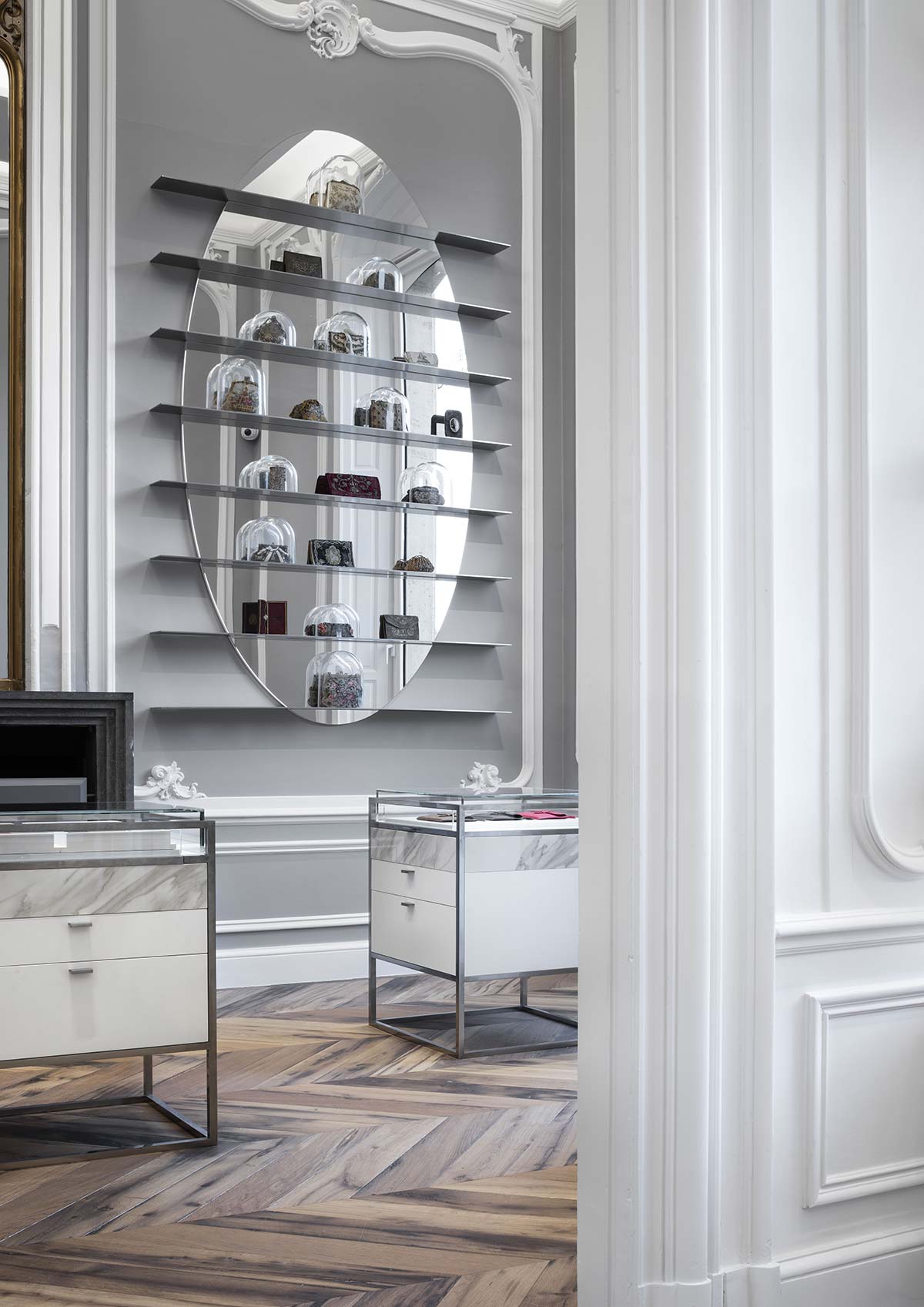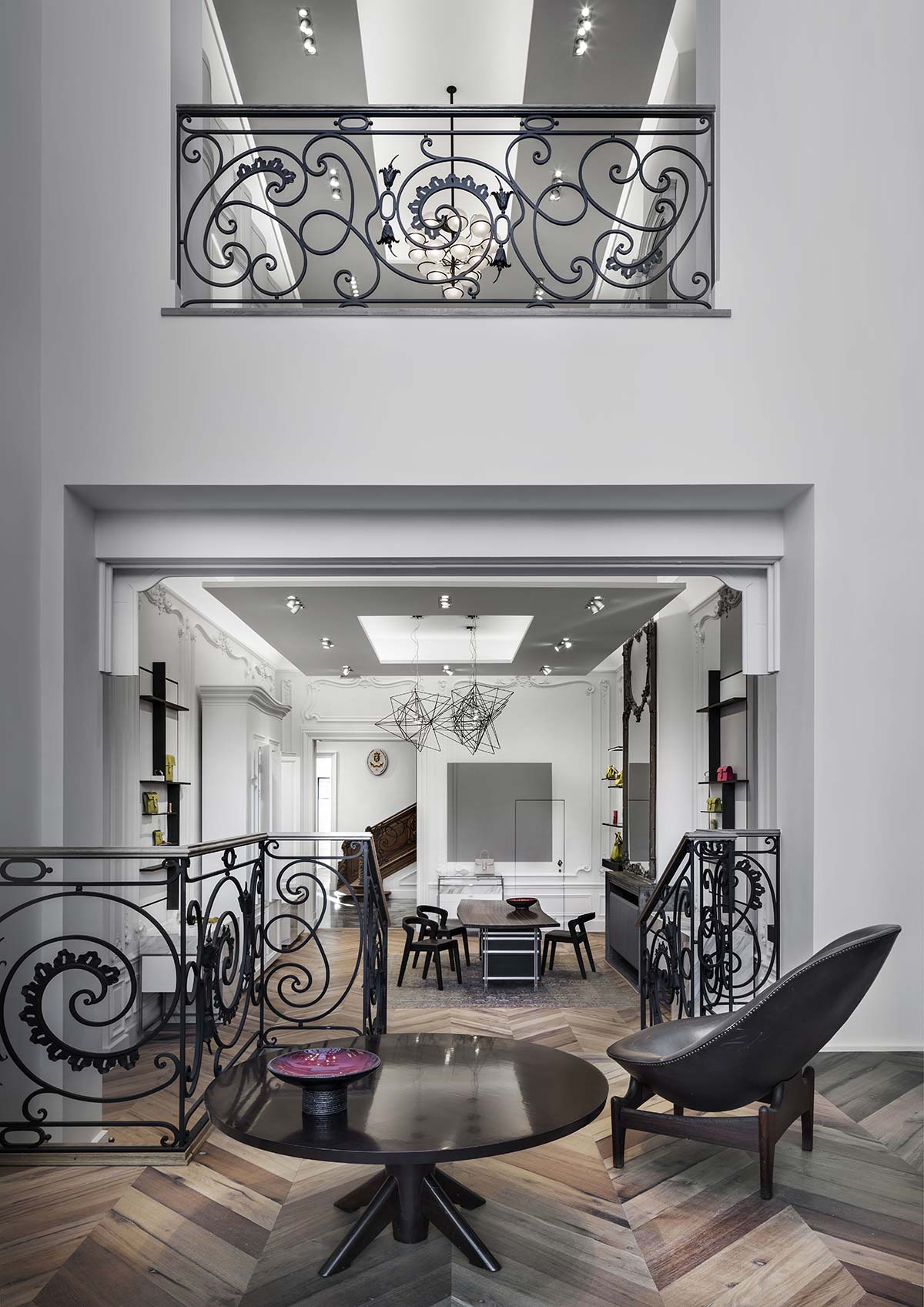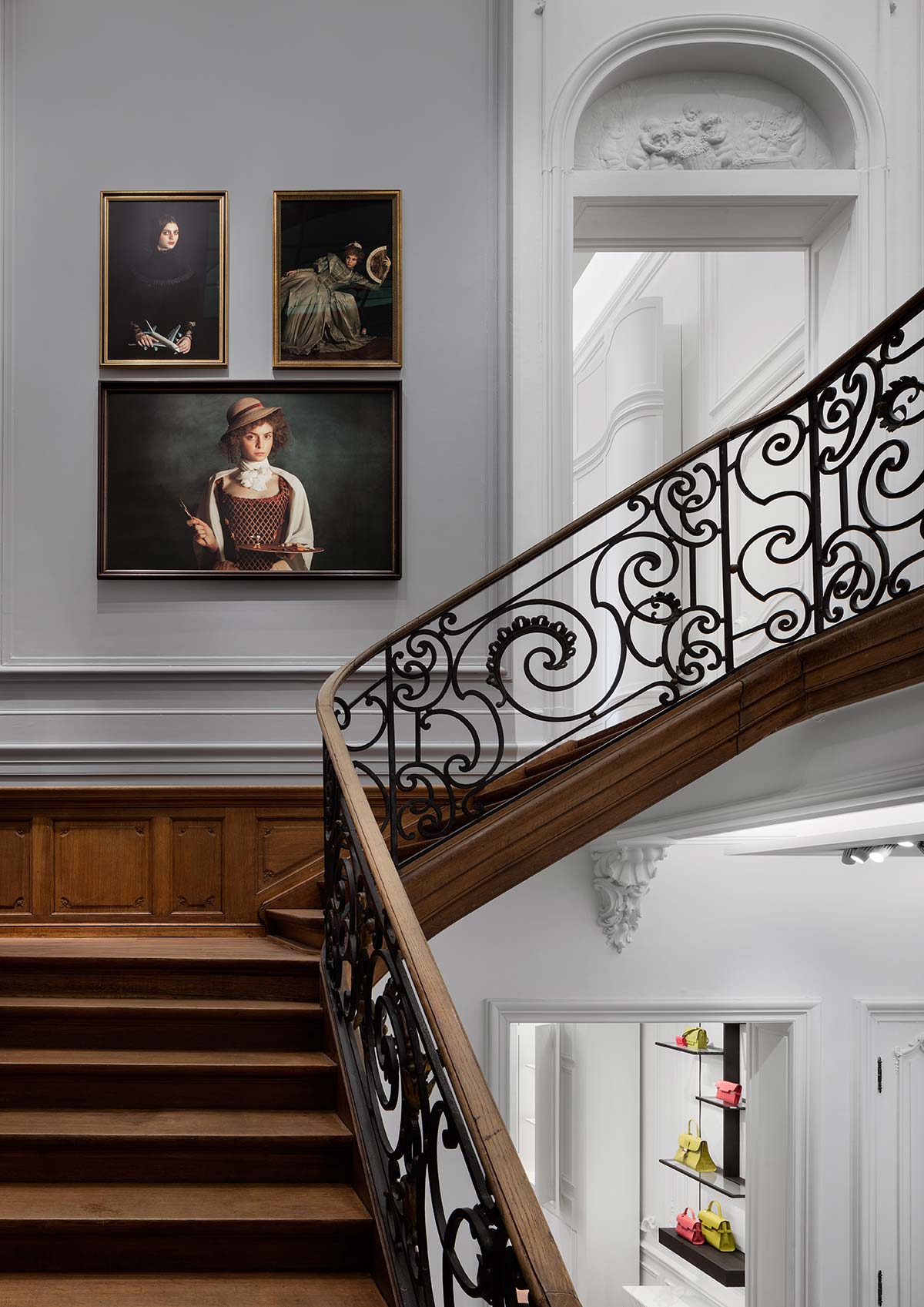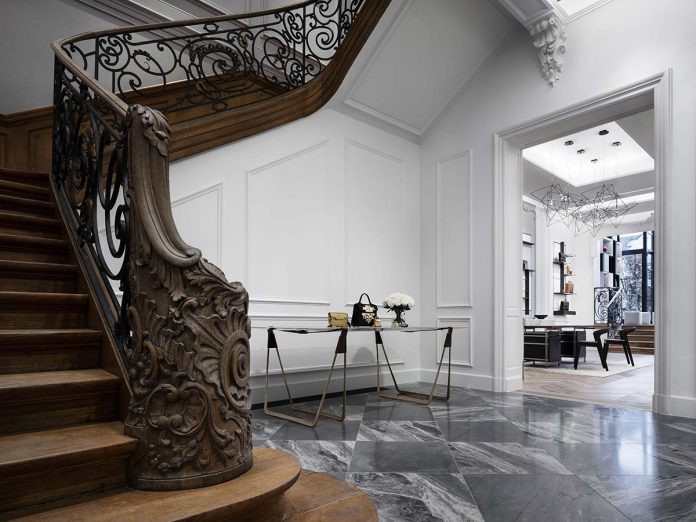DATA SHEET
Owner: Delvaux
Interior design: Vudafieri Saverino Partners
Furnishings: Barth on designs by Vudafieri Saverino Partners
Lighting: Studio Amort – Emotional Lighting Design
Photo credits: Santi Caleca
Delvaux, “quintessentially Belgian maison” that in 1908 gave birth to the stock exchange precisely as we understand it today, has just inaugurated a new store in the heart of Brussels: Le 27. The project, designed by the Italian studio Vudafieri-Saverino Partners, which is in fact curator of various expositions of Delvaux throughout the world, celebrates the philosophy and heritage of the brand by encouraging a visual story that blends into the museographic set-up, in the indefinable space of contamination, animated by an expressive choral spirit that triggers the sensation of a multiple stratum of time.
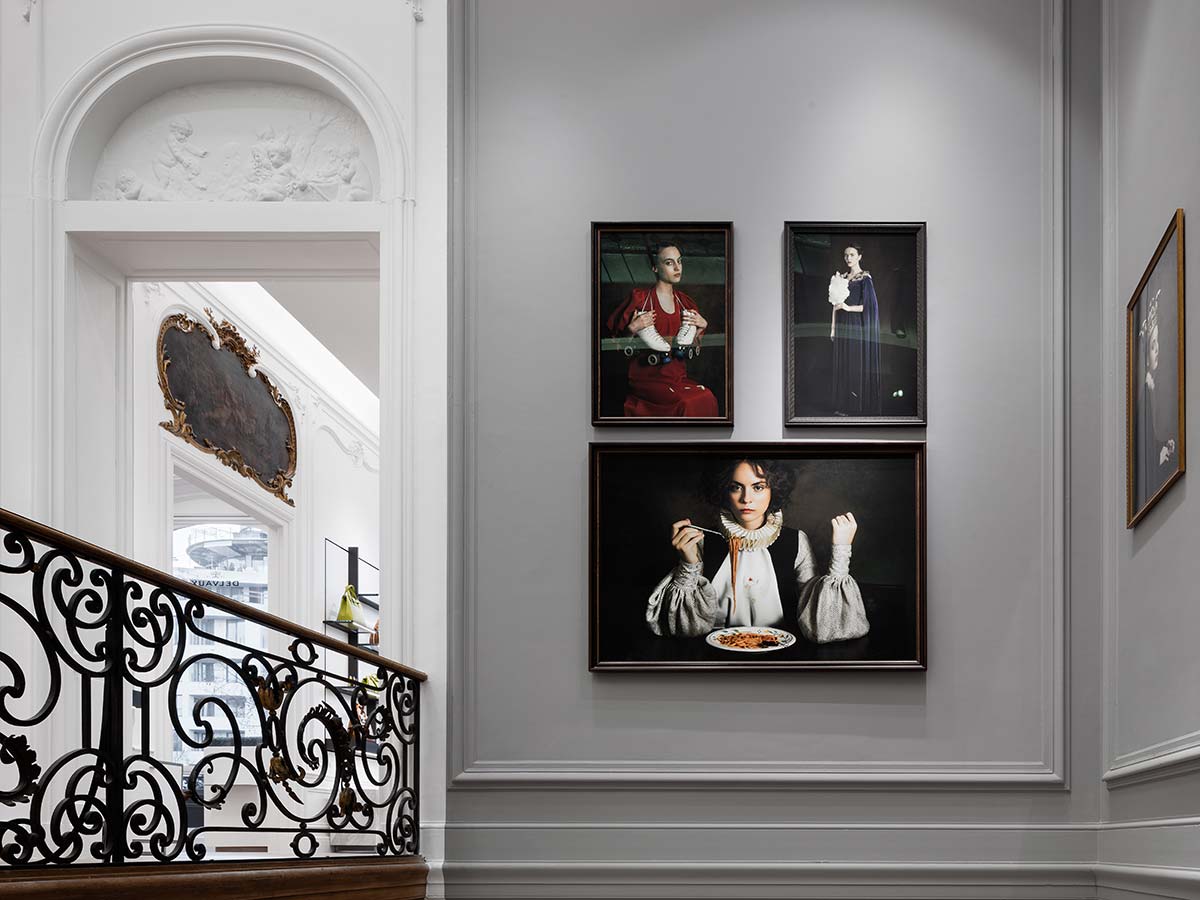
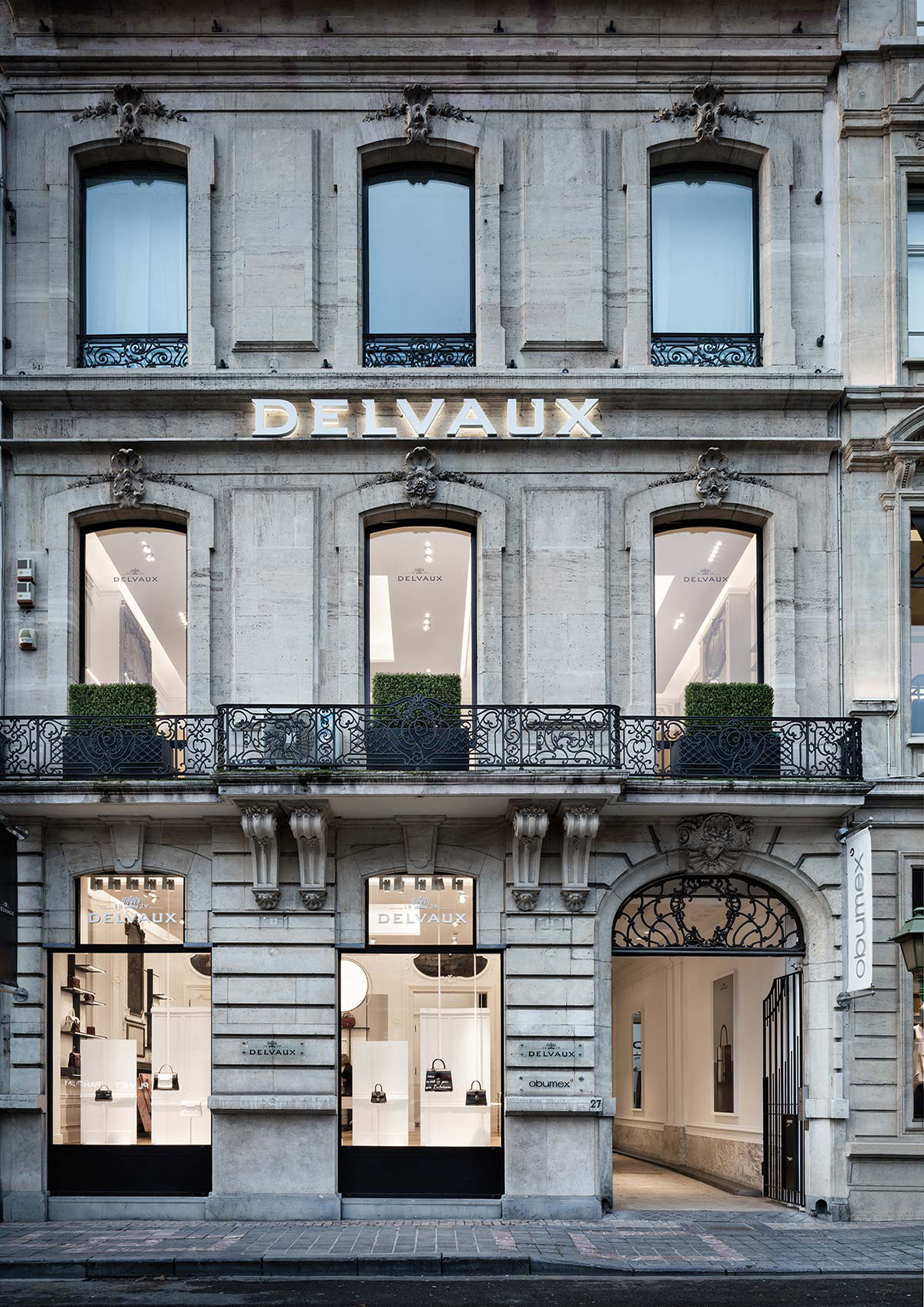
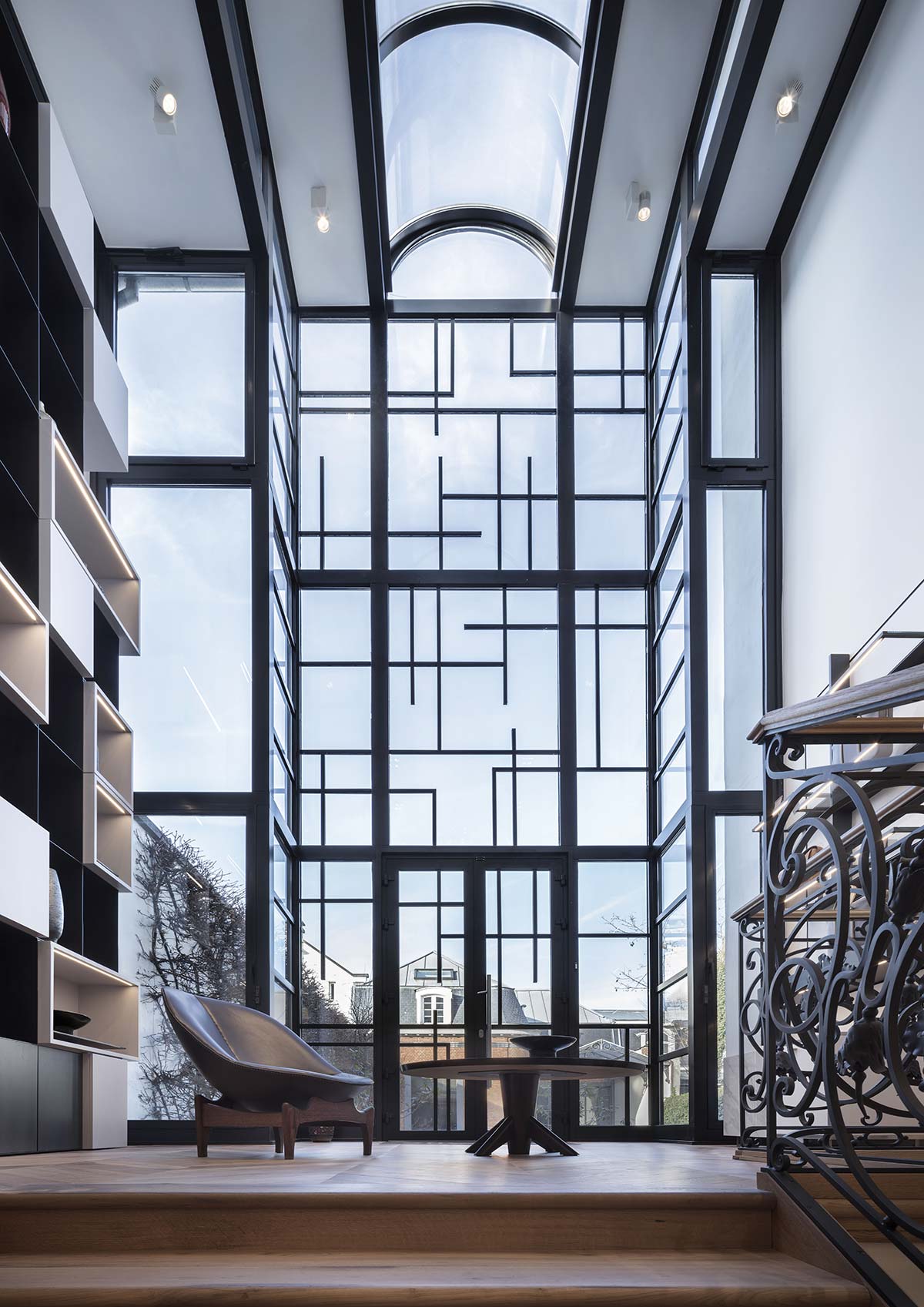
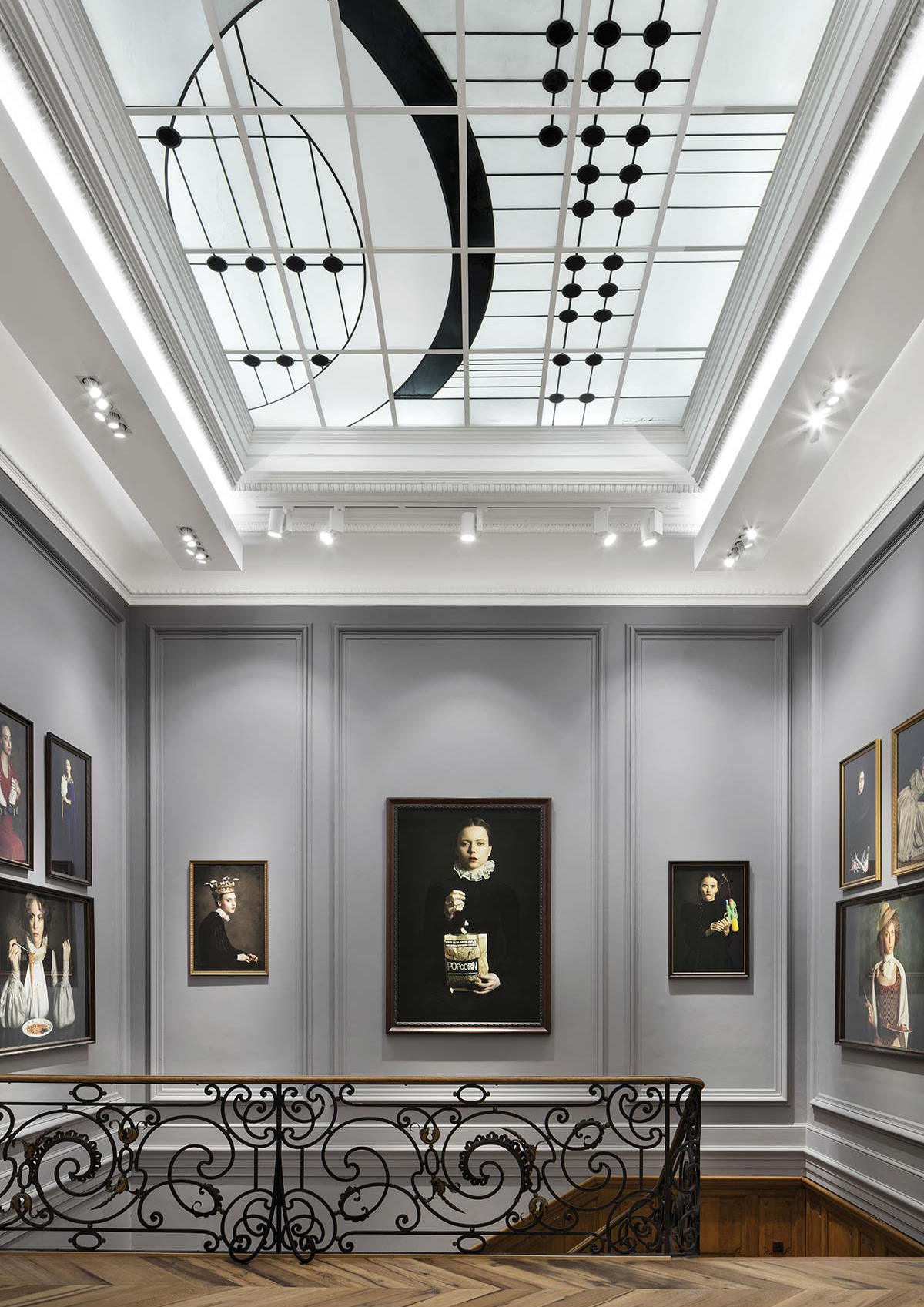
To enrich the interiors of the sumptuous villa that houses the boutique, already heirs of a historicist eclecticism that combines nineteenth-century mouldings, medallions, mirrors, frescoes and materials such as marble, wood and wrought iron, is the contribution to the colourful collection of twentieth-century ceramics, some among the most emblematic pieces of the twentieth century Belgian design – created by Jules Wabbes, Pieter de Bruyne, Renaat Braem, Emiel Verannema – and the more contemporary ones by Nathalie Dewez, Alain Berteau, Ben Storms and the Italian Gino Sarfatti. While the photographic portraits of the Argentine artist Romina Ressia embellish the temporal illusion by combining everyday artefacts, most often kitsch but in any case ironically unsettling, with light, poses, dresses and hairstyles of clear sixteenth-century derivation.
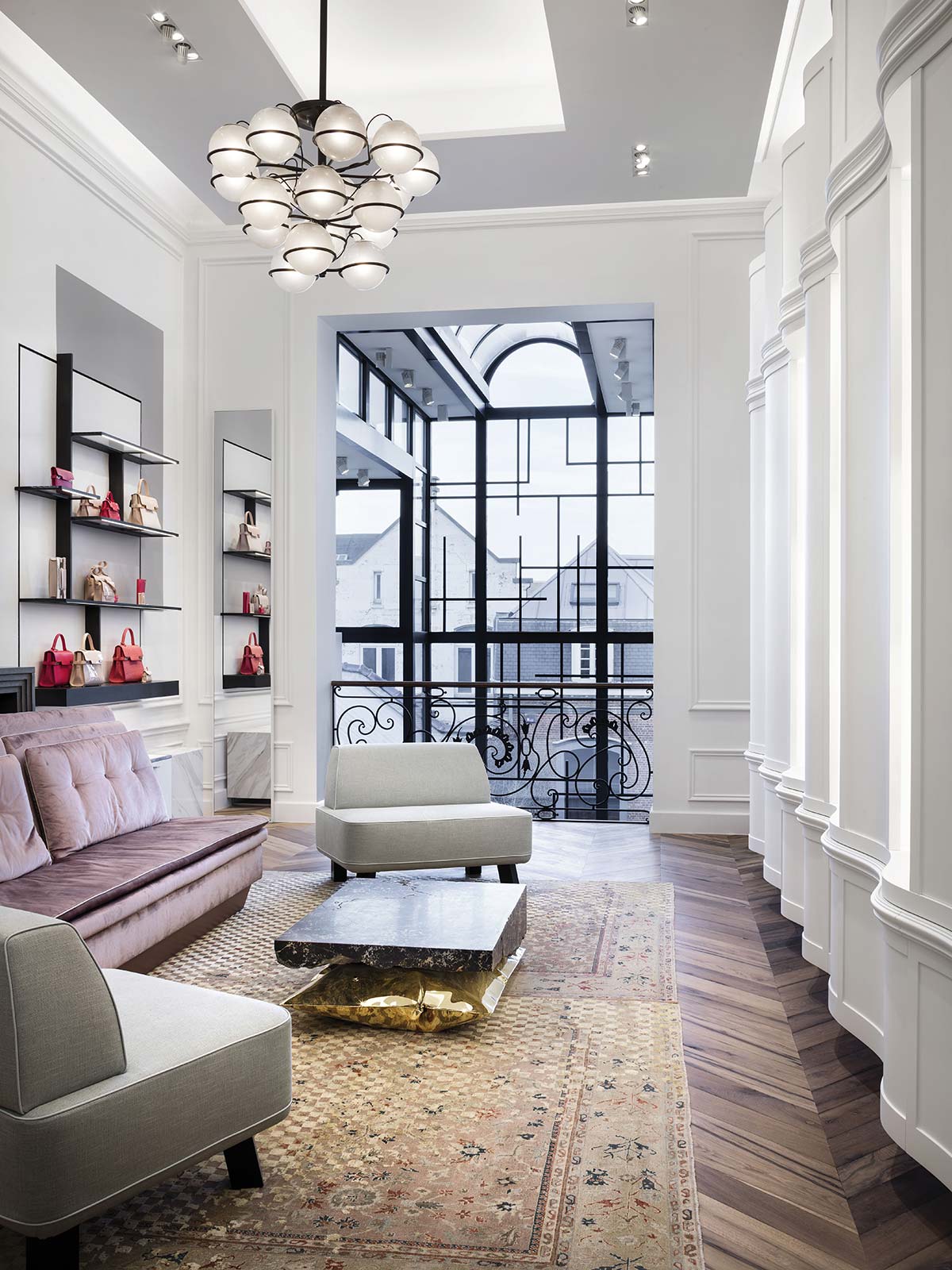
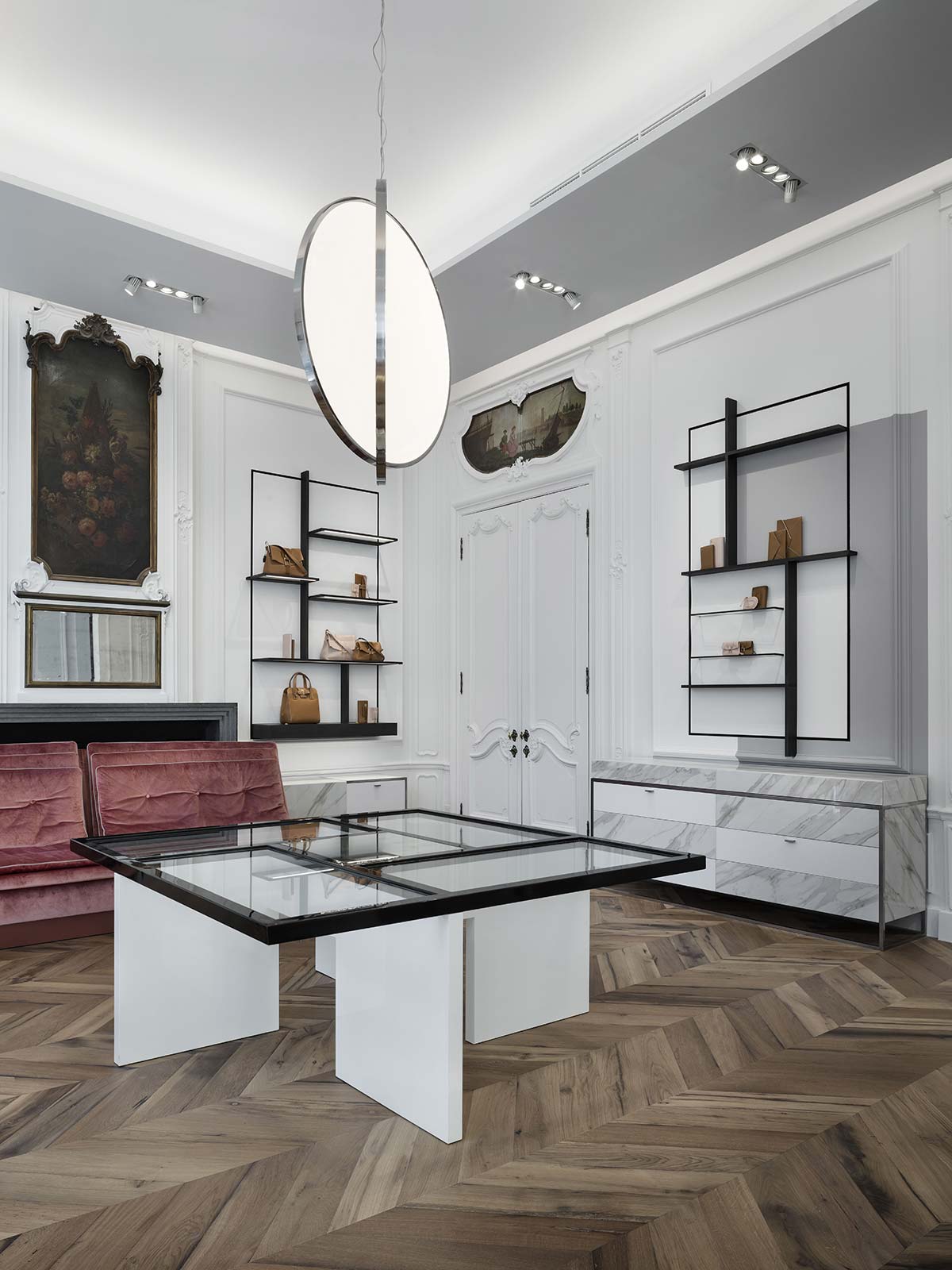
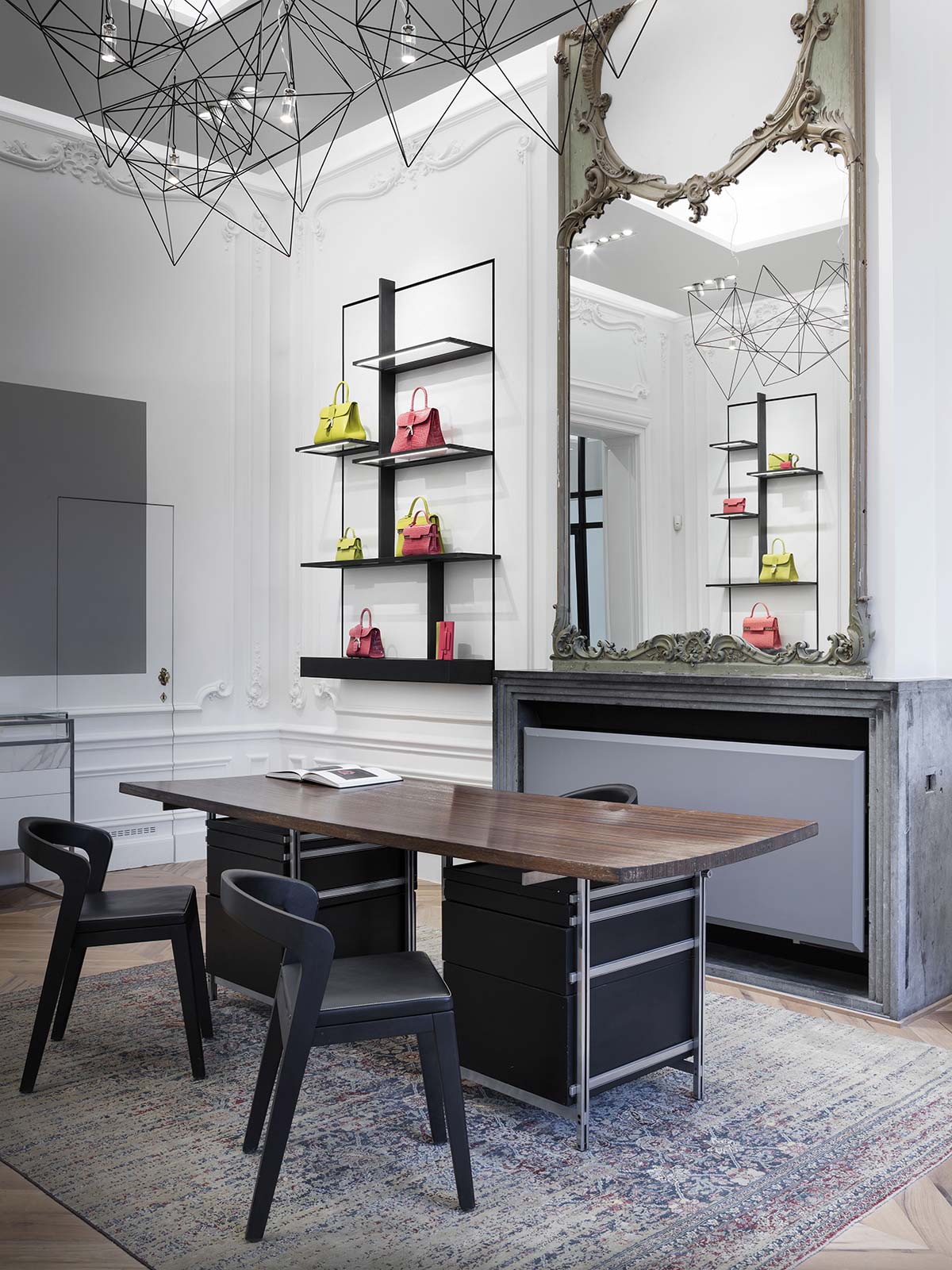
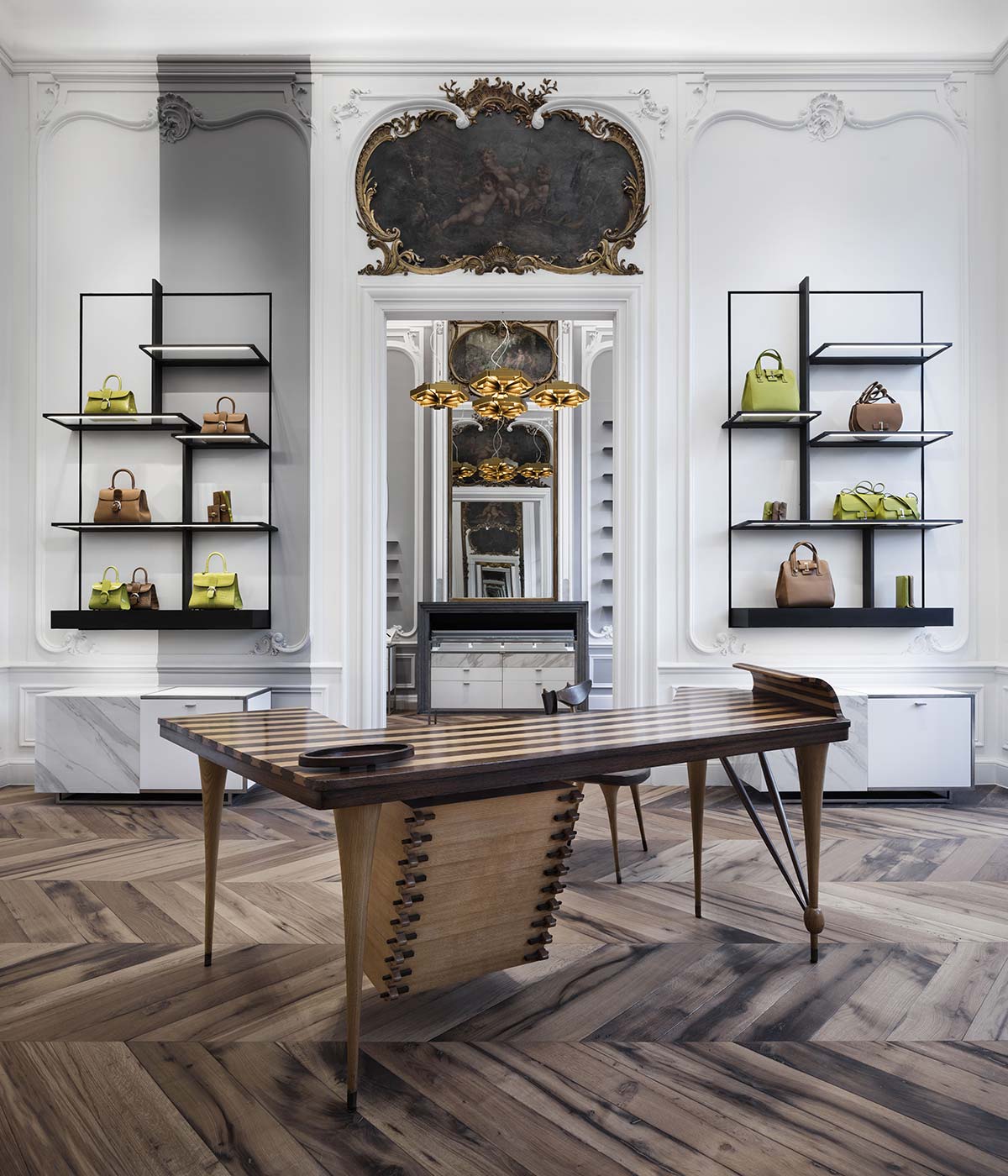
Delvaux bags and accessories, by their very nature a playful and eccentric interpretation of luxury, are enhanced in an intimate dialogue with the works through the interaction of modular elements that combine geometric rigor and trompe-l’oeil supports. The wall displays are designed as abstract paintings, whose design is a clear tribute to the De Stijl art movement of Mondrian. Their geometric and classical shape is balanced by light grey vertical bands, which interrupt the symmetry. These are combined with shelves and consoles: designed to restore a combination of minimal asymmetrical shapes and embellished with materials such as marble or polished nickel, commonly used in furniture design during the Art Deco period. The combination of the apparent simplicity of the Mondrian-style wall-mounted display furniture, the Baroque finishes of the wardrobes and the irreverence of the off-centre stripes highlight the balanced contrast between classic and modern, between rule and exception, which is substantially the reflection of Delvaux’s surrealist soul, in whose collections classic and rigorous forms dialogue with extremely modern and pleasantly playful insertions.
